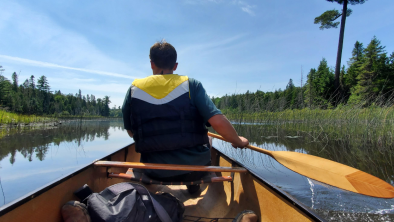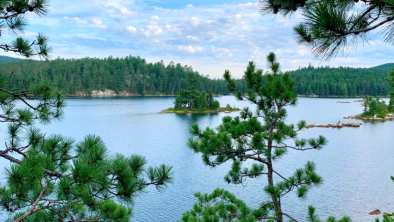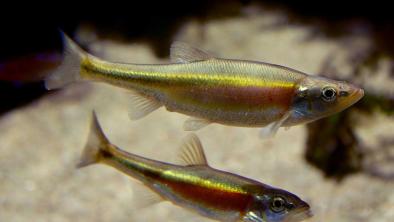Largest known old-growth eastern hemlock forest in Canada threatened by logging
Katie Krelove


PETERBOROUGH – Researchers and environmental watchdog the Wilderness Committee are calling on the Ontario government to put an immediate halt to planned logging on crown land in Peterborough County — and to establish permanent protection for a unique old-growth ecosystem.
Ancient Forest Exploration and Research (AFER) and a local Youth Leadership in Sustainability (YLS) high school class visited and documented Canada’s largest known stand of old-growth eastern hemlock forest this fall, in what the researchers acknowledge is the traditional territory of the Anishnaabe Mississauga. The find was part of a project to map dwindling old-growth forests in southern Ontario. Many of these forests haven’t been documented.
“We know old-growth forests are huge carbon sinks as well as home to many species — and land conservation is key to the current ‘Made-in-Ontario’ environment plan,” said Wilderness Committee Ontario Campaigner Katie Krelove. “If the Ontario government wants to meet its conservation targets they must act to protect precious forests when confronted with research like this."
The forest stand is located north of Catchacoma Lake and adjacent to Kawartha Highlands Provincial Park — unlike the park, it’s leased for logging.
“We studied trees in the forest and found many over 120 years-old. The oldest tree we found, a 350-year-old eastern hemlock, is marked to be cut down,” said Carling Dewar, forest ecologist and public outreach coordinator with AFER.
Of documented old-growth forests of this type in Canada, the Catchacoma stand is the largest at 550 hectares — nearly the size of Toronto’s downtown core.
“Natural, unlogged eastern hemlock forests of any age are endangered ecosystems and old-growth forests of this type are even less common,” says AFER’s chief scientist, Peter Quinby, who’s been studying old-growth forests in Ontario for more than 35 years. “If an inventory of Ontario’s old-growth forests had been done 20 years ago, as required by the provincial Old-growth Forest Policy, we would not be in this situation.”
Roughly 15 per cent of the forest is scheduled to be logged this winter on lease to the Bancroft Minden Forest Company. The groups are raising concerns about the potential effects of logging on the health of the ecosystem and on the species-at-risk who call it home, including five-lined skink and eastern wood pee-wee songbird.
They have written to Minister of Natural Resources John Yakabuski and Minister of Environment Jeff Yurek to put a moratorium on logging and designate the land as a nature reserve or annex it to Kawartha Park. Old-growth forests are worth more intact than harvested.
“If kept unlogged the natural capital value of the Catchacoma Forest is estimated at $1.7 million per year compared to a timber logging value of roughly $100,000 per year,” said AFER researcher Laura Collings.
Natural capital refers to the monetary value of biodiversity and ecosystem services natural habitats provide.
“Time in nature provides strong mental health benefits,” added YLS teacher Cam Douglas. “My students had very powerful connections to the land while doing their survey work.”
“Ontario’s Crown Forest Sustainability Act grants the Minister Yakabuski the ability to change a forest management plan at any time,” said Krelove. “We’re asking him to intervene — do what’s right — and save this old-growth forest.”
The groups are inviting the public, government officials and media to attend a solstice celebration in the Catchacoma forest from 1 p.m. to 3 p.m. on Dec. 21, to raise awareness and appreciation to save the old-growth hemlocks.
–30–
Please find b-roll footage attached here and photos here.
For more information, please contact:
Katie Krelove | Ontario Campaigner, Wilderness Committee
647-208-4026, katie@wildernesscommittee.org
Carling Dewar | Ancient Forest Exploration and Research
(705) 312-2337, cdewar@ancientforest.org


